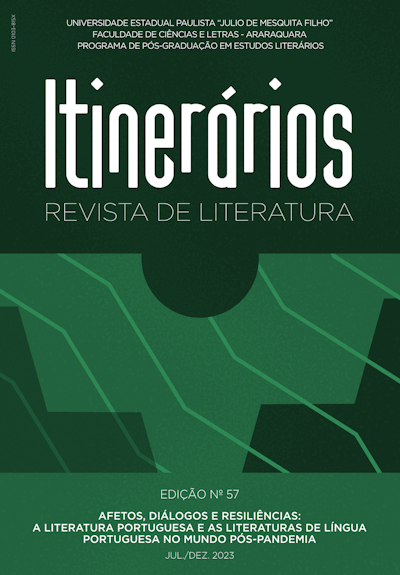Fadique and his descendeants
outline of a course
DOI:
https://doi.org/10.58943/irl.v1i57.18713Keywords:
Carlos Fradique Mendes, Eça de Queirós, Perry Vidal, José Eduardo Agualusa, Fernando VenâncioAbstract
There are characters who outlive their authors, and thanks to other hands they gain other lives. An excellent example is Edmond Dantès. The protagonist of The Count of Monte Cristo was initially appropriated by Alfredo Hogan in A mão do finado (1853) and later continued to appear in other works, published in the last century and in ours. The same happened with Fradique Mendes, even though his case is more complex. When he appeared in the Correspondência (Eça de Queirós, 1997), he already had a previous life: he had published poems in A Revolução de setembro and O primeiro de janeiro and appeared, quickly, in O mistério da estrada de Sintra (Eça de Queirós, Ramalho Ortigão, 1997). Even after the organizer of your correspondence dies, he will continue to live. He will appear, among other works, in O único filho de Fradique Mendes (Perry Vidal, 1950), more recently, in O Enigma das Cartas Inéditas de Eça de Queirós (José António Marcos,1996), Nação crioula (José Eduardo Agualusa, 1997), Os esquemas de Fradique (João Venâncio, 1999), Autobiografia de Carlos Fradique Mendes (José Pedro Fernandes, 2002) and Eça de Queirós, segundo Fradique Mendes (Sónia Louro, 2018). The objective of our text is to deal with the first work in which reference is made to a descendant of Fradique, the political letter of March 22, 1909, written by João Chagas and addressed to Fradique Filho, and then to make considerations about three novels in which Fradique also had descendants.
Downloads
Published
Issue
Section
License
Os manuscritos aceitos e publicados são de propriedade da revista Itinerários. É vedada a submissão integral ou parcial do manuscrito a qualquer outro periódico. A responsabilidade do conteúdo dos artigos é exclusiva dos autores. É vedada a tradução para outro idioma sem a autorização escrita do Editor ouvida a Comissão Editorial.

